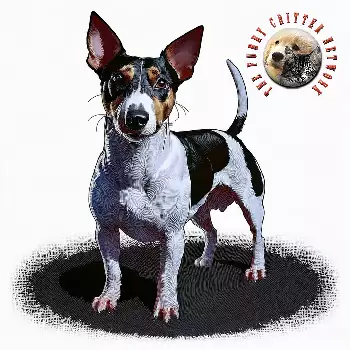The Rattling Terrier represents one of several names applied to a versatile American working terrier more commonly known as the Rat Terrier. This designation emphasizes the breed's legendary prowess in rattling out and dispatching vermin from American farms, barns, and homesteads during the breed's heyday in the early twentieth century. The rattling action, describing the swift shaking motion these terriers use to dispatch their prey, became so associated with the breed that variations of this term were adopted as informal names.
The breed is most widely recognized by its official registered name, Rat Terrier, which directly references the primary quarry these efficient hunters were developed to pursue. This straightforward name appears in all major kennel club registries and breed standards. The name is popularly attributed to President Theodore Roosevelt, though historians debate whether he actually coined the term or simply popularized an existing designation.
Among breed enthusiasts, the affectionate nickname Rattie has become perhaps the most common informal name for these charming terriers. This diminutive term captures the breed's endearing personality and the close bonds they form with their owners. Other documented alternate names include American Rat Terrier, which emphasizes the breed's distinctly American origins and development, and Ratting Terrier, which like Rattling Terrier references the breed's working function.
Historically, these dogs were frequently called Feists in the American South, where small hunting terriers of various types were grouped under this broader designation. The term feist describes the breed's spirited, feisty temperament as much as it identifies any particular type of dog. Early American farmers might have simply referred to their barn dogs or farm terriers without concerning themselves with formal breed names.
The breed's recognition journey reflects its American origins and practical working heritage. The United Kennel Club led major registry recognition efforts, accepting the Rat Terrier as a registered breed on January 1, 1999. This milestone established the first significant breed standard and formal documentation for a breed that had been developed primarily for function rather than form.
The American Kennel Club granted initial recognition in 2006 when Rat Terriers were allowed to participate in companion events through the Foundation Stock Service. Full AKC recognition came on June 1, 2013, when the breed entered the Terrier Group. This recognition significantly raised the breed's profile and increased interest among companion dog seekers.
The Canadian Kennel Club recognized the Rat Terrier in 2020, with the standard becoming effective in January 2021, placing them in Group IV: Terriers. This recognition extended official status to Canadian breeders and exhibitors. However, the Fédération Cynologique Internationale has not recognized the breed, limiting its official standing in FCI member countries throughout Europe and other regions. The Kennel Club of the United Kingdom similarly does not recognize this distinctly American breed.

